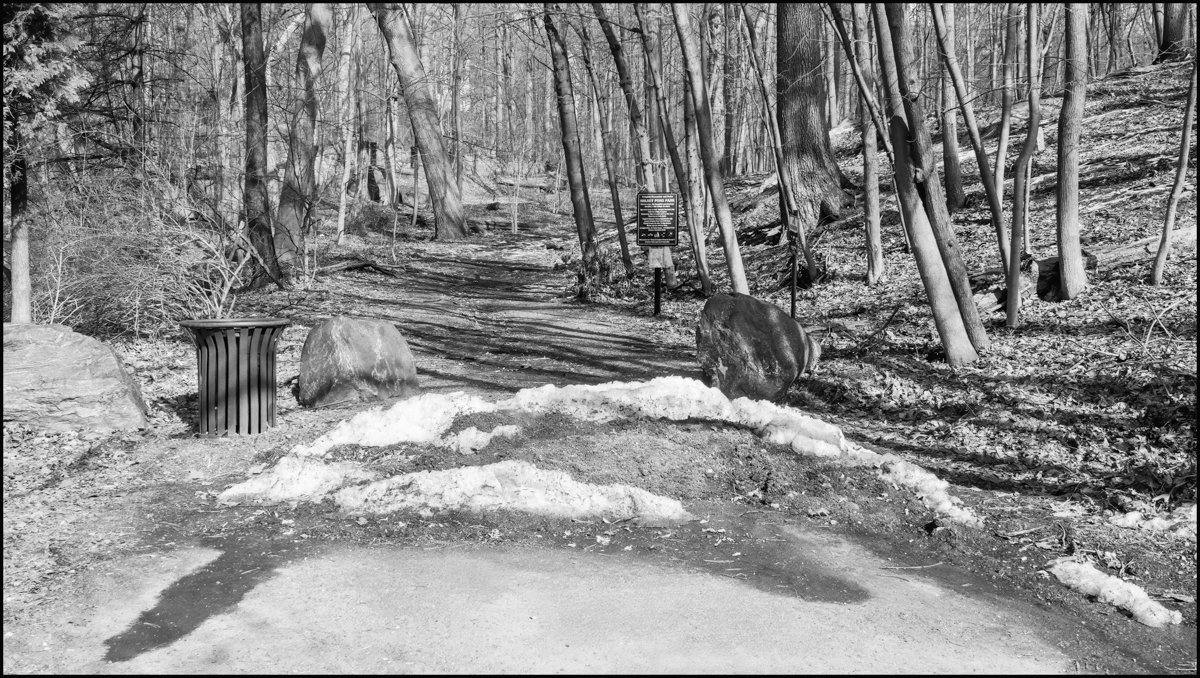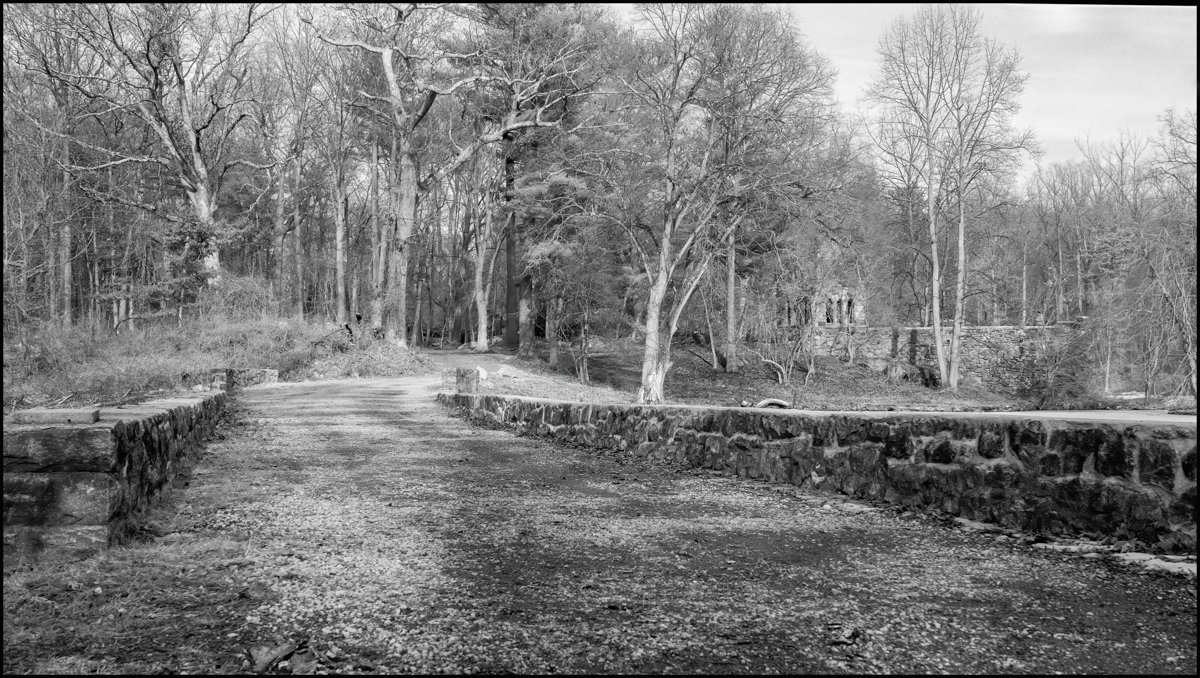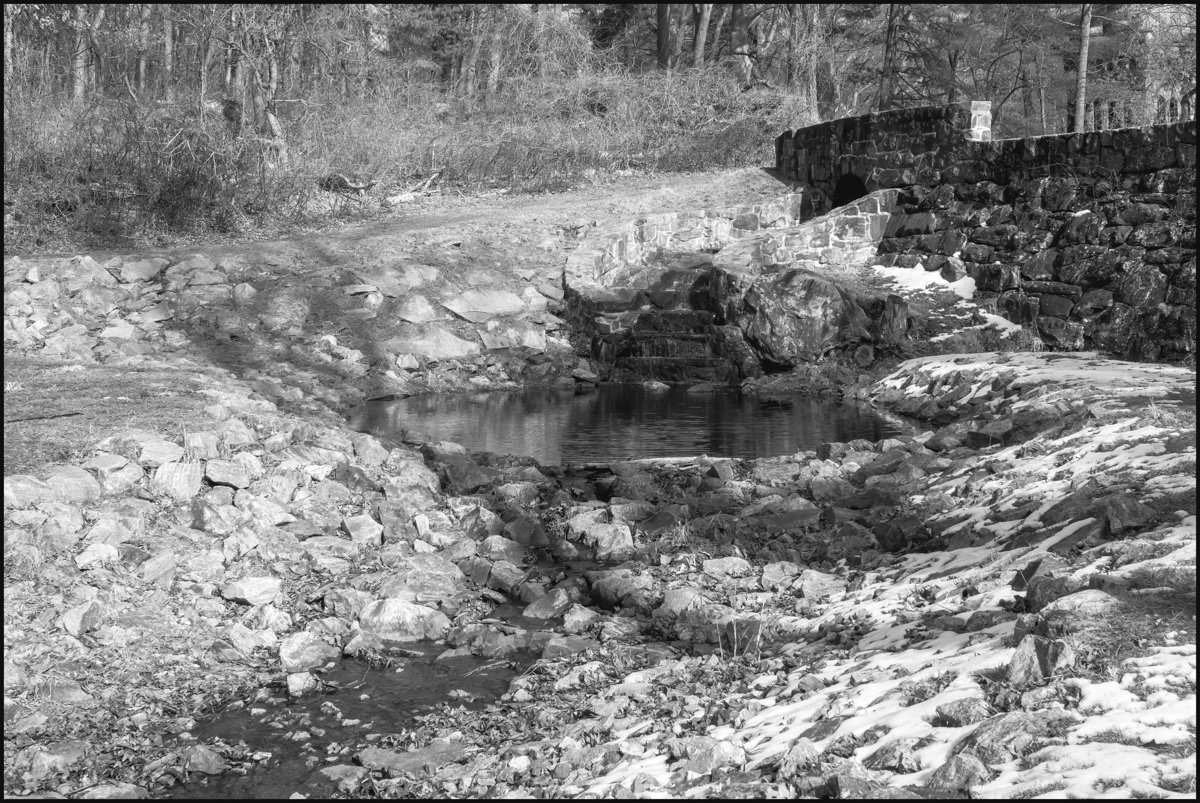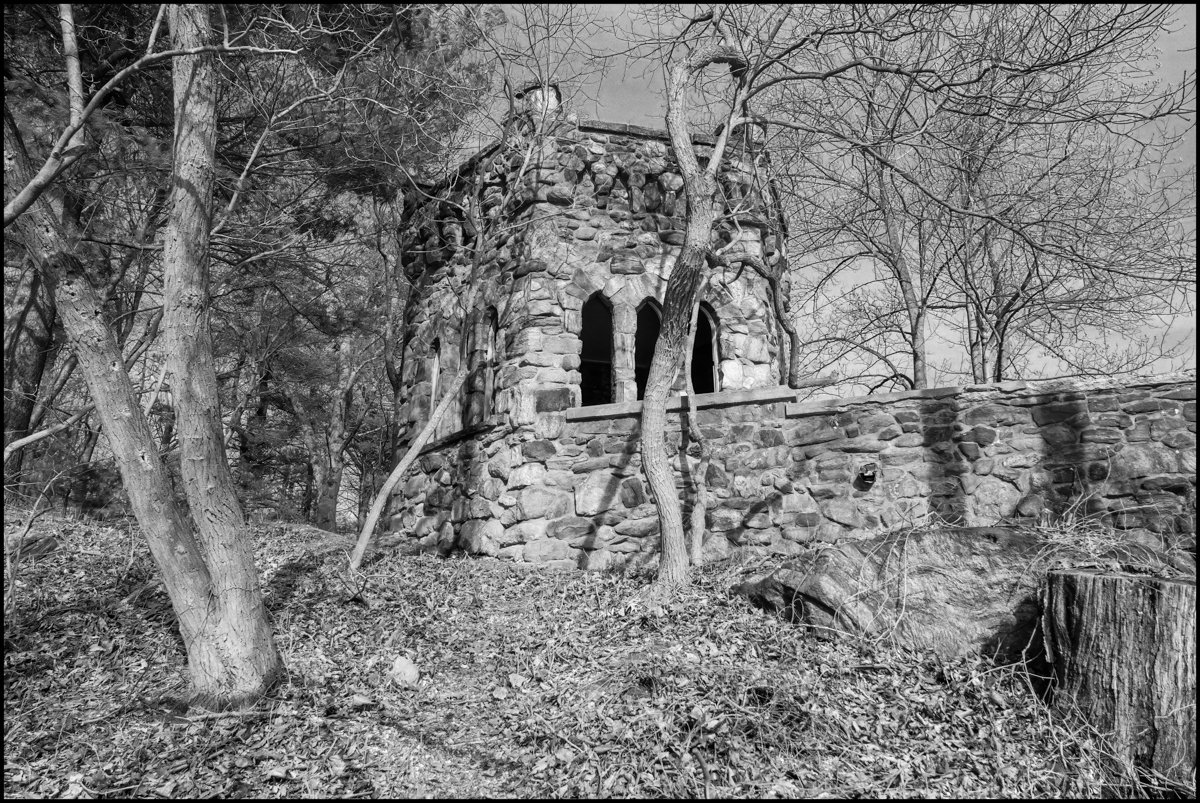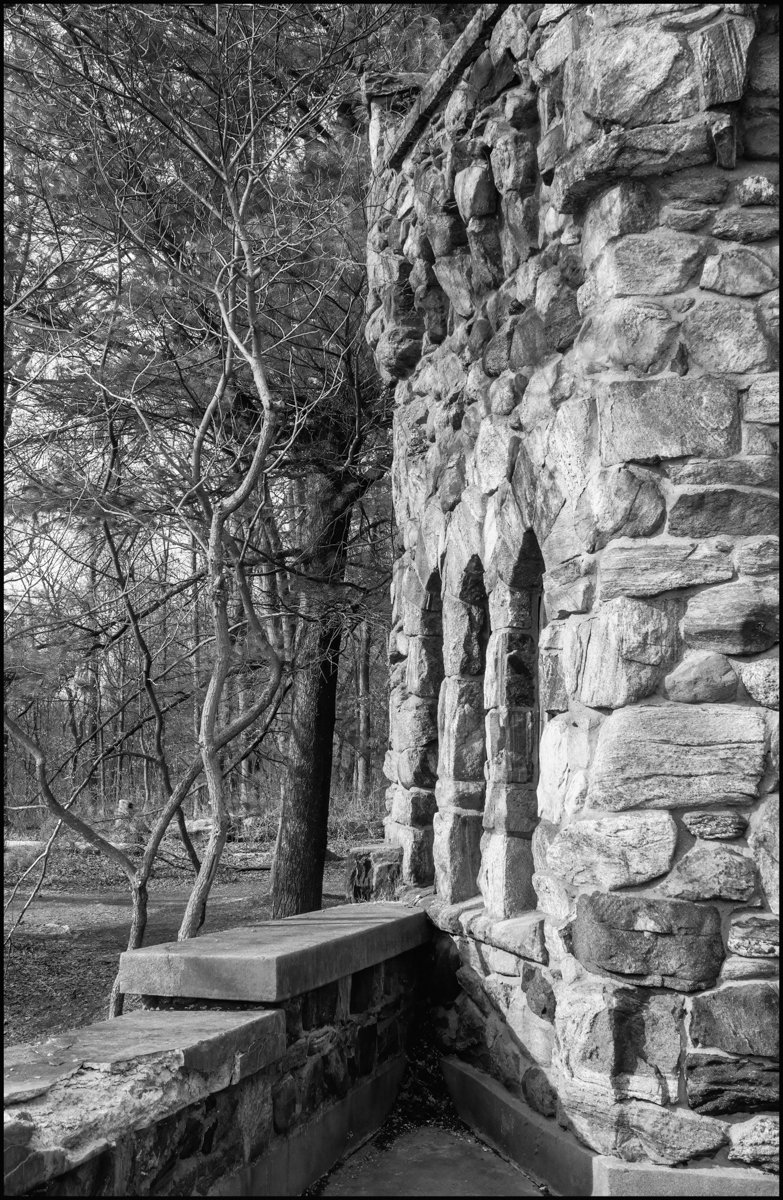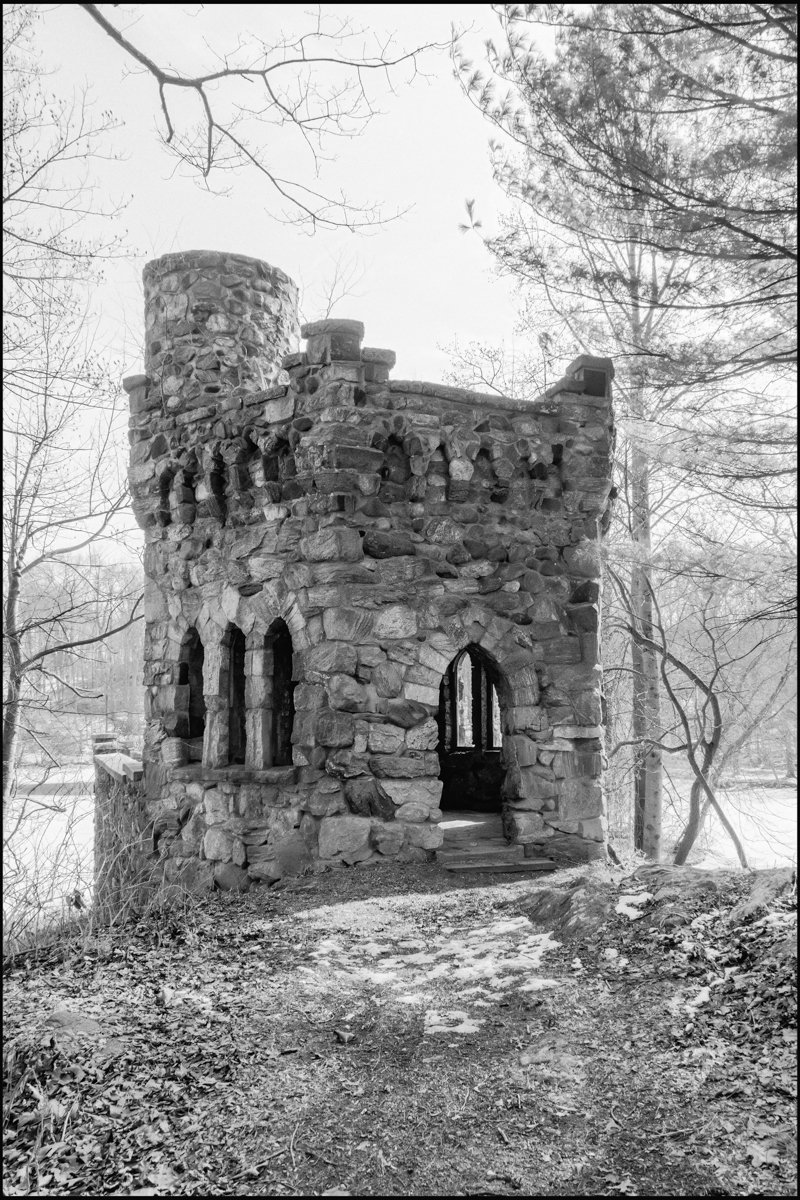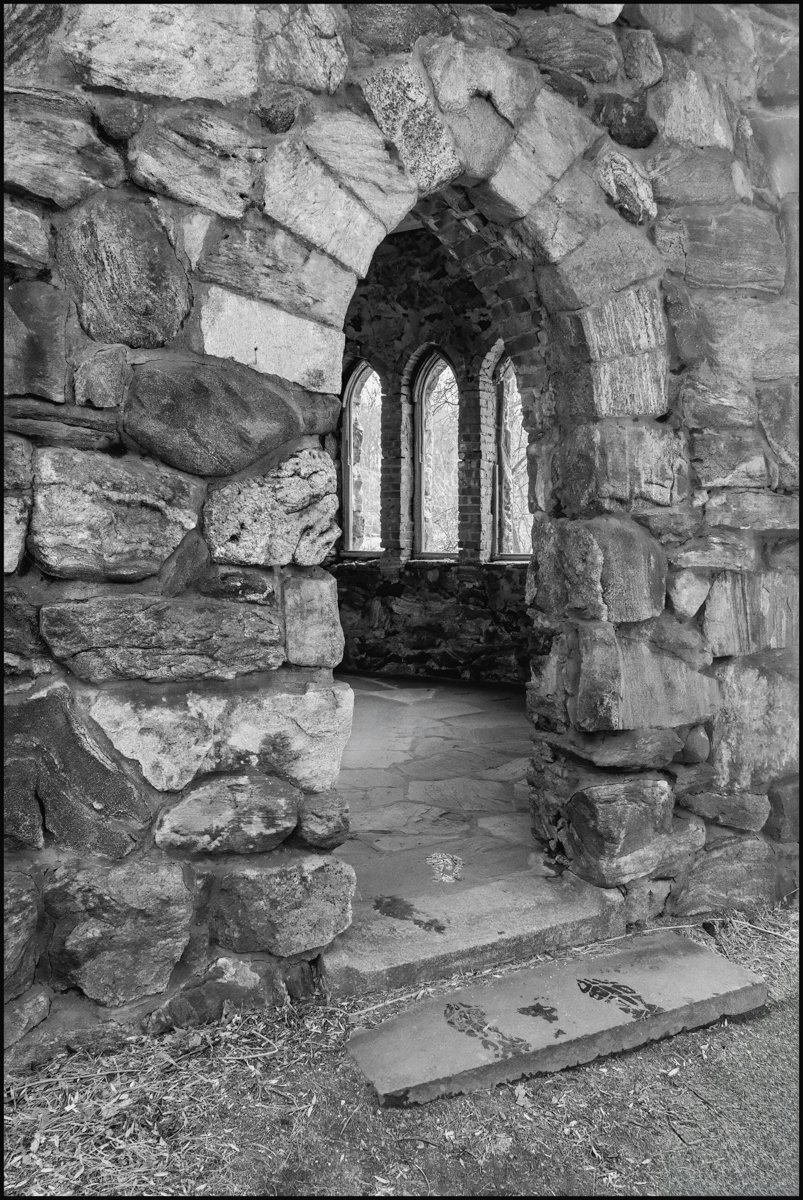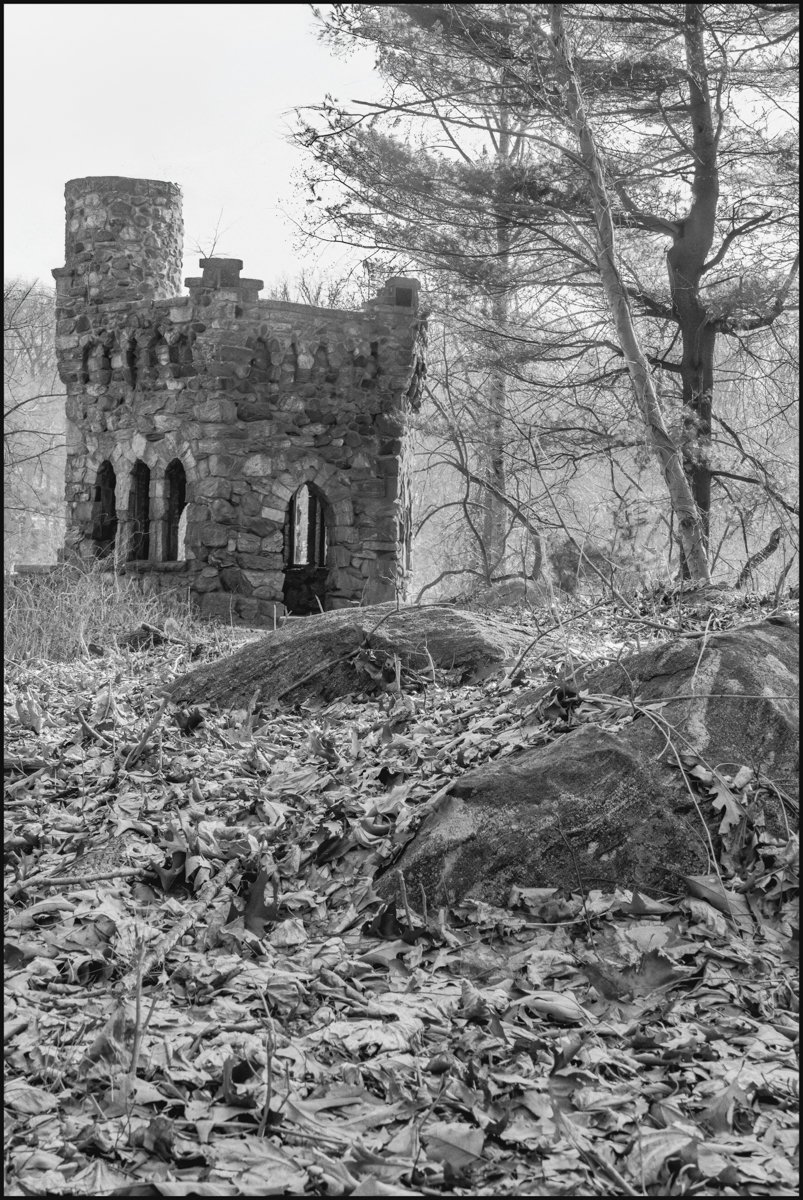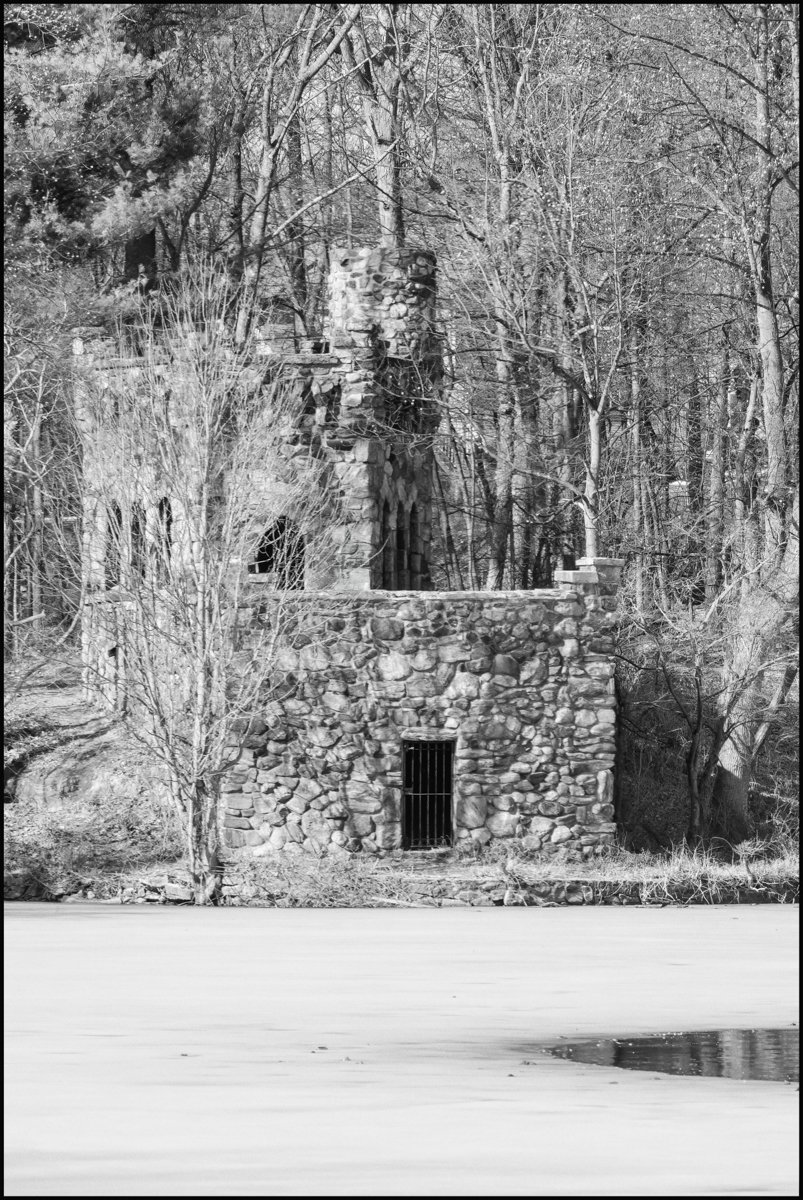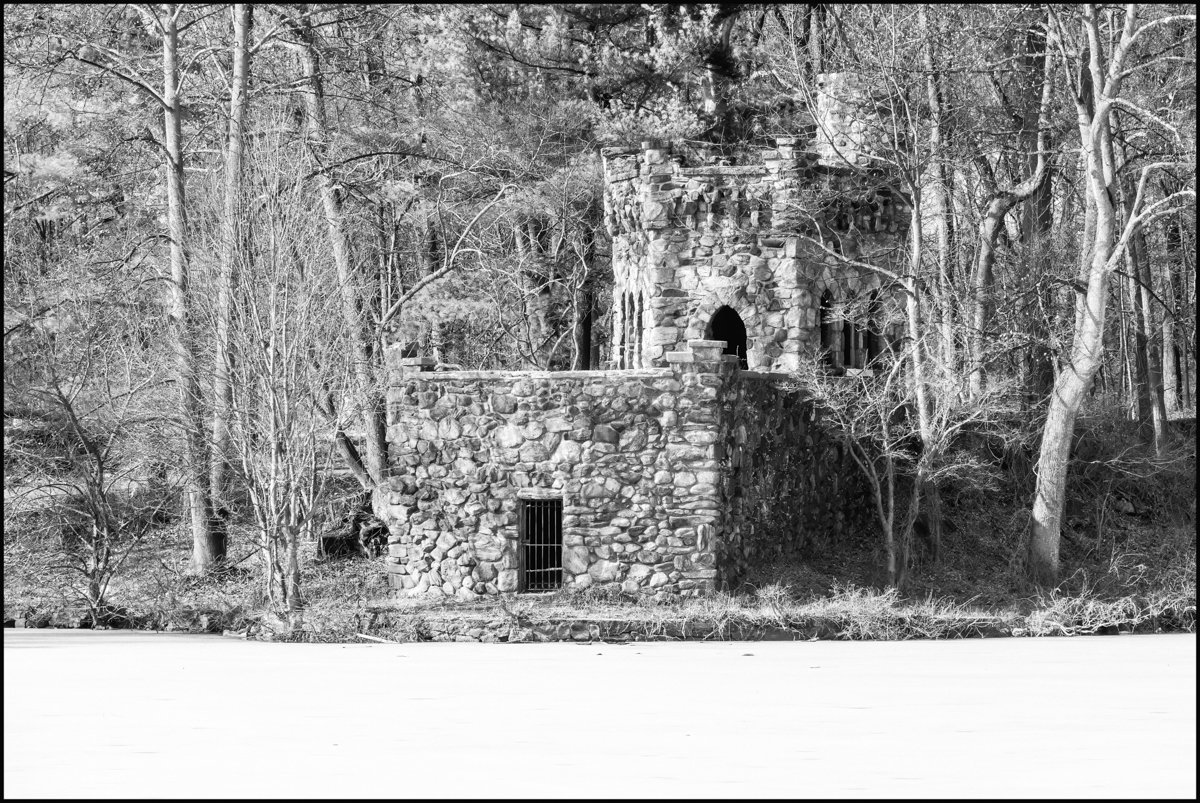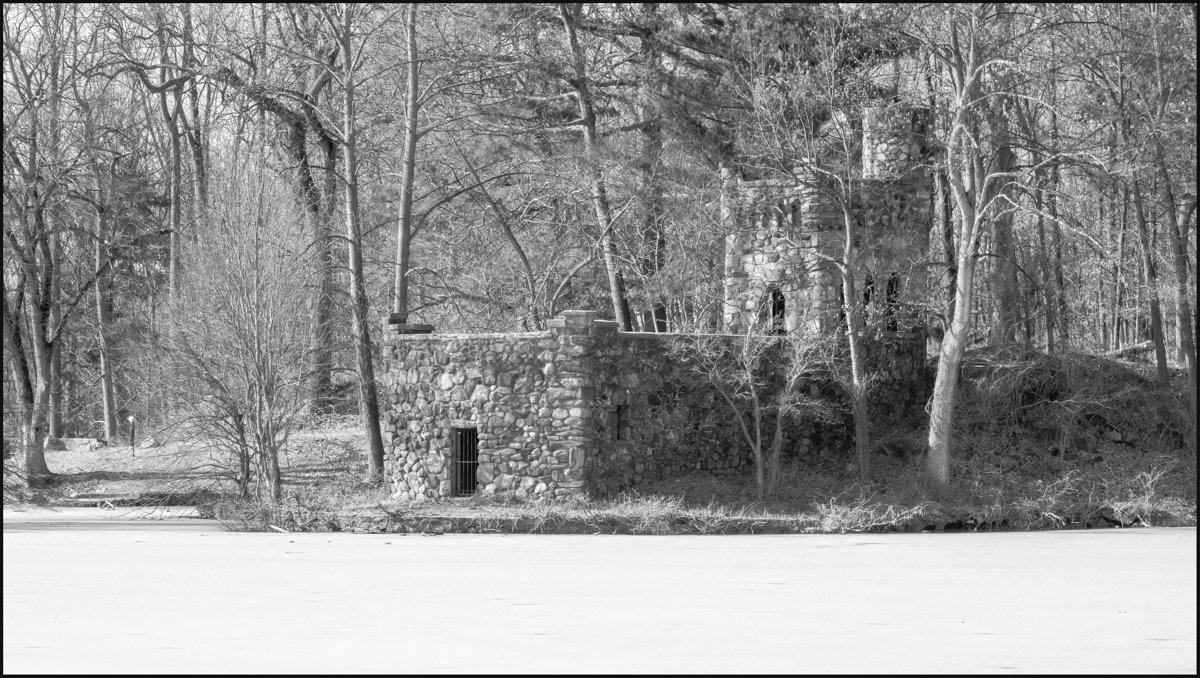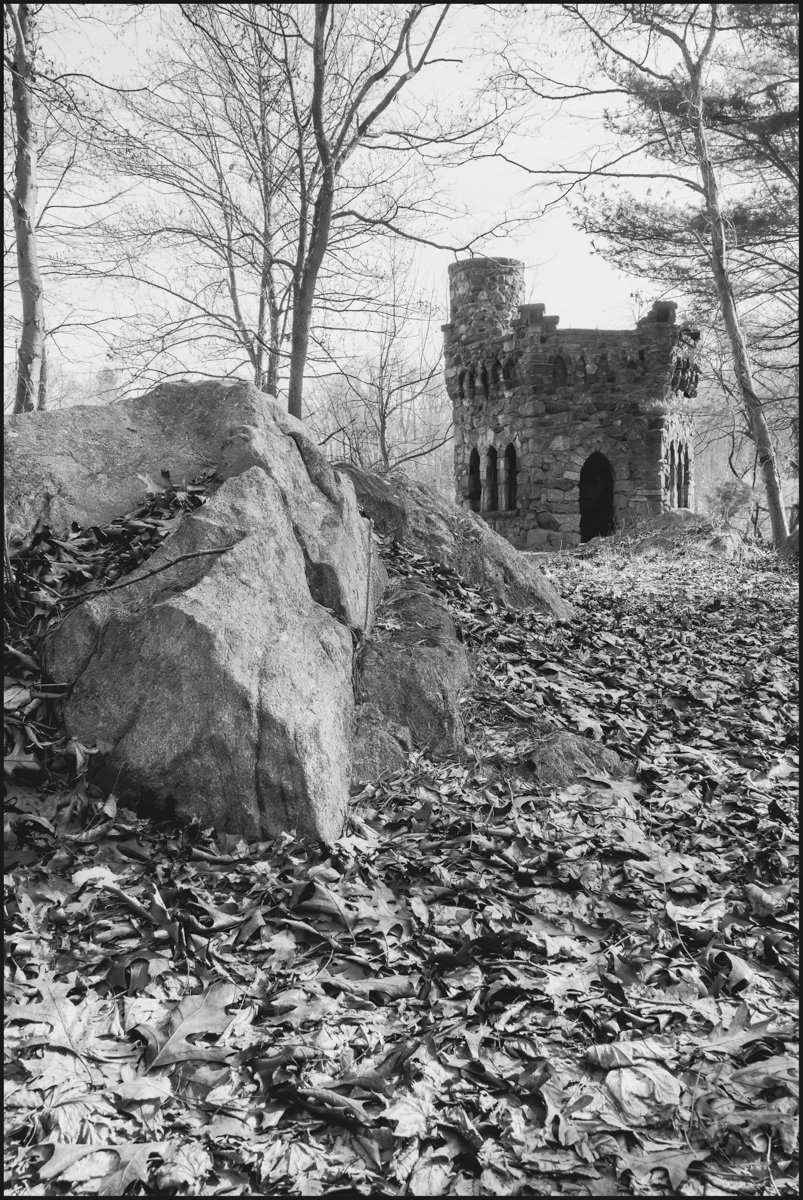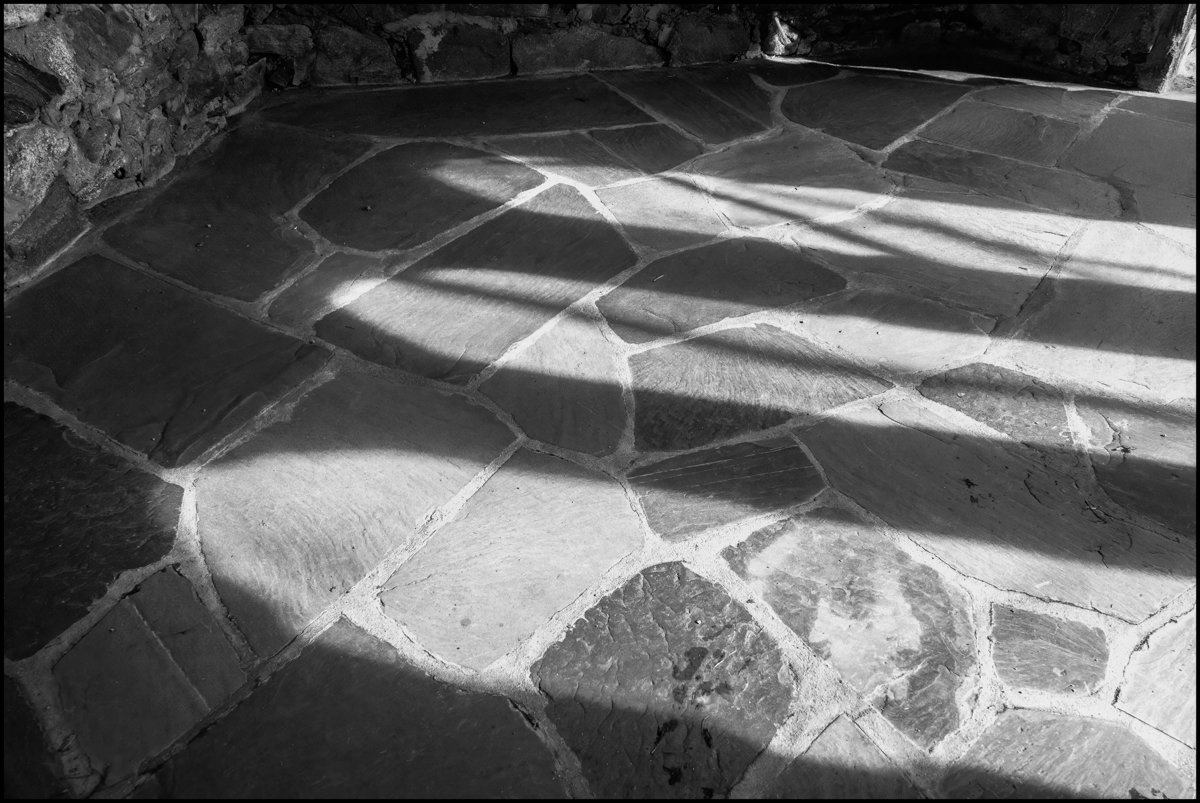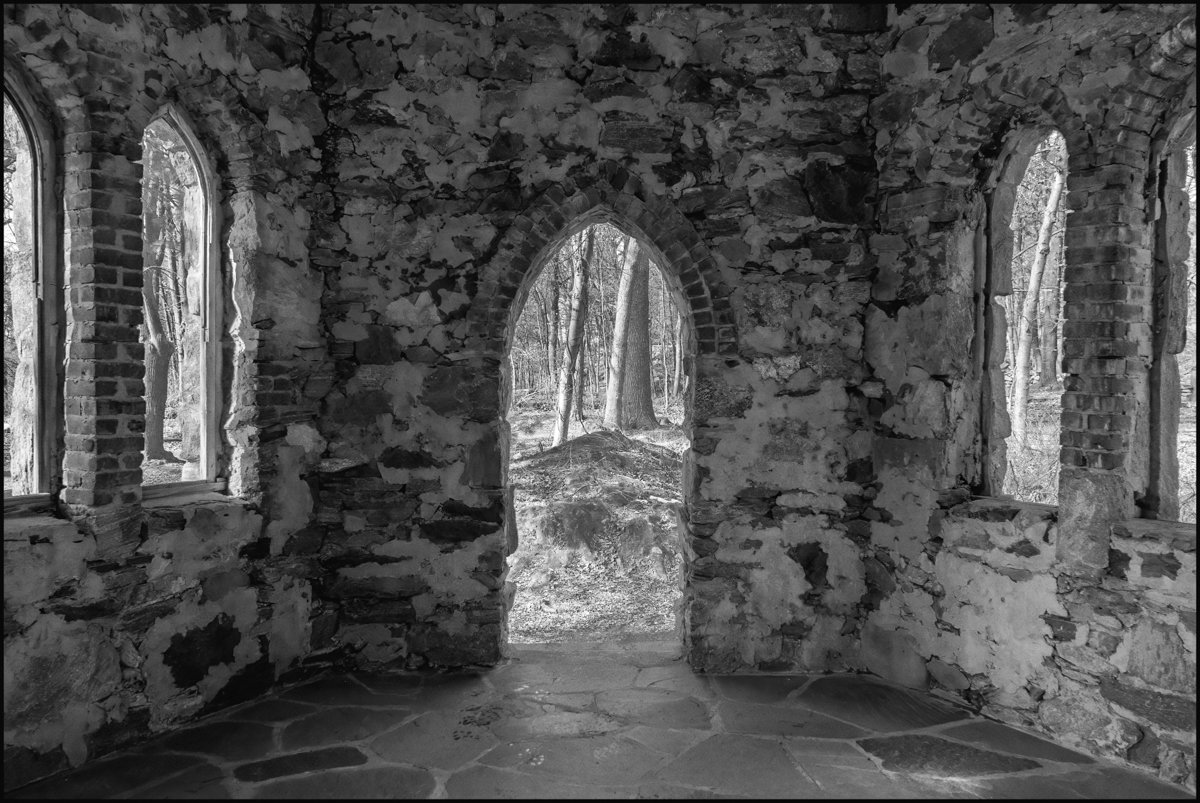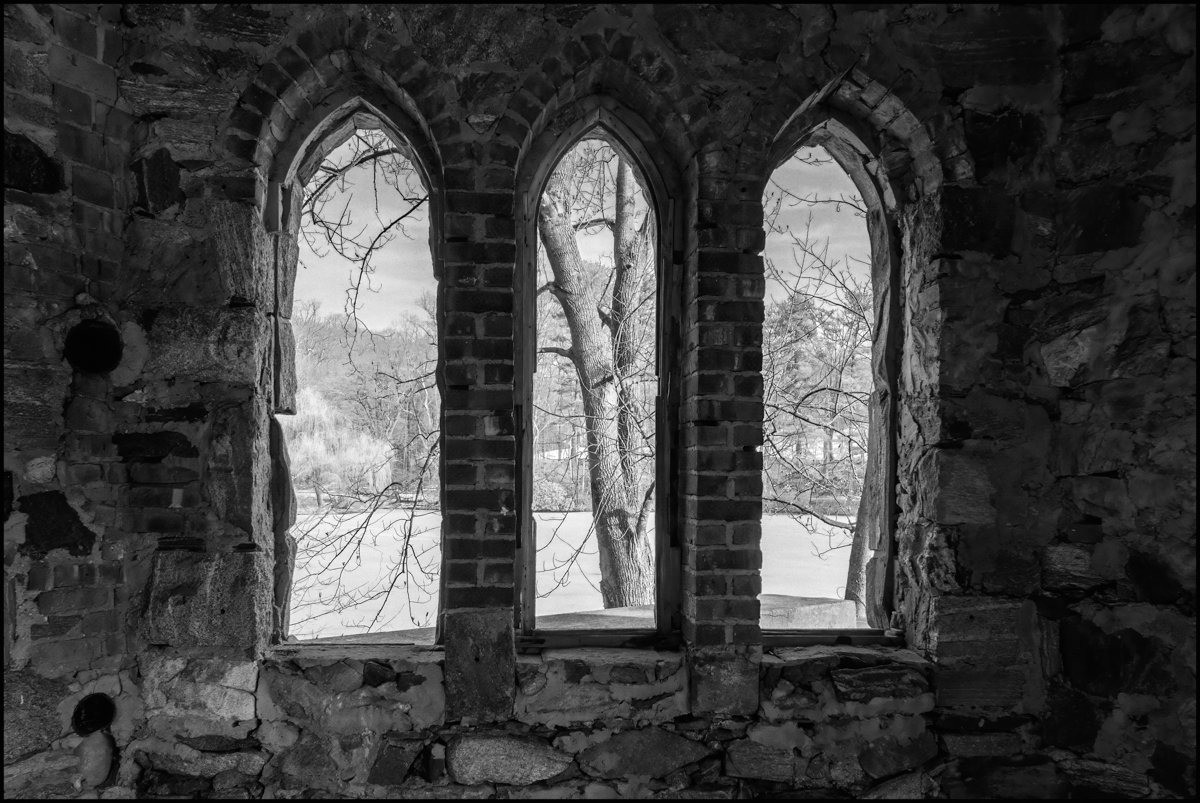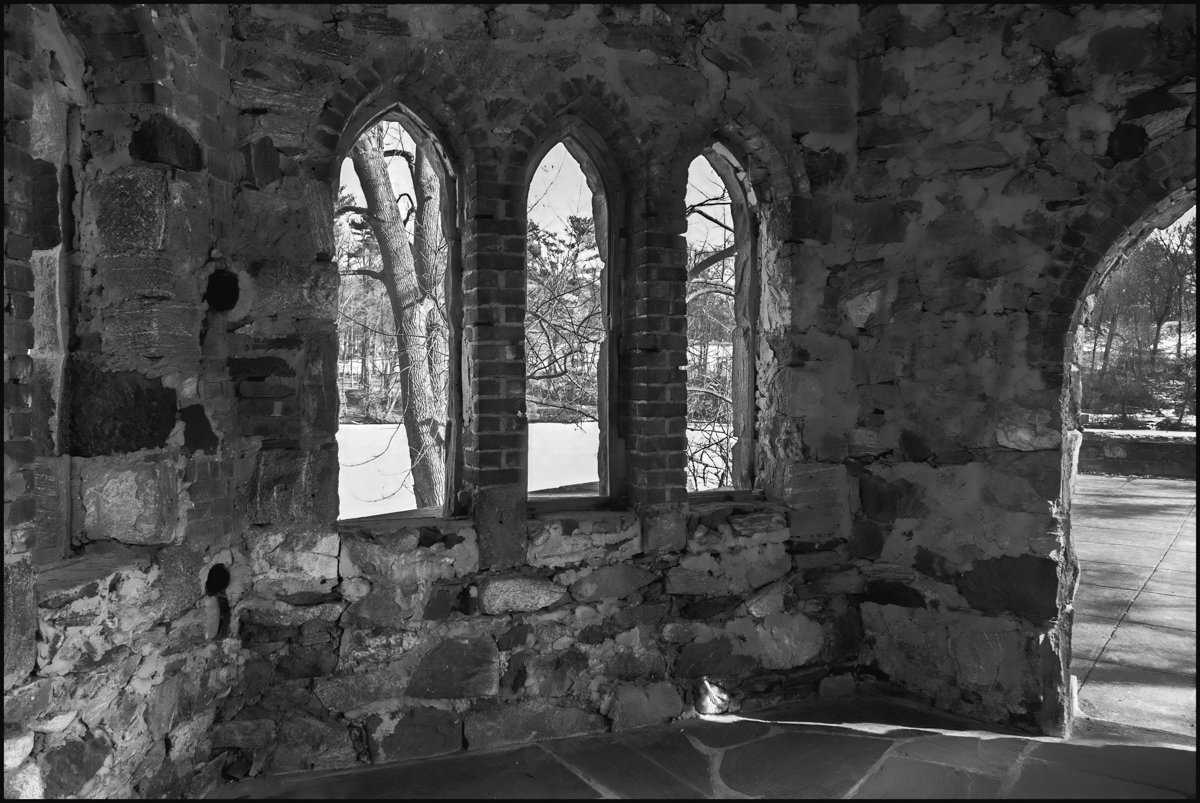To Halsey Pond Park and Back
Almost exactly 10 years ago (March 2014) I visited Halsey Pond Park in Irvington, NY. Since so much time had elapsed, I decided to go again. I’d read the park had been under threat and had possibly even disappeared. I decided to see if this was the case.
My plan was to make my way to Ossining Metro North Station and take the train down to Ardsley. From there it was about a thirty-minute walk to the park. I figured I might get a few pictures along the way. After checking out the condition of the park I thought that instead of walking back to Ardsley I would instead walk back to Irvington (a little farther north) where I would get a train back to Ossining and head home.
As is often the case I arrived at Ossining station very early. So, after purchasing my ticket I went down to nearby Here Coffee and Beer to pick up some water to take with me on my walk, and to wait comfortably until it was time for me to take the train. While I was getting the water from a cooler, I perused their excellent collection of craft beers. One in particular caught my eye: Samuel Smith’s Nut Brown Ale. I like brown ales, and I knew that this was a nice one made in Yorkshire, UK. It was way to early (even for me) to be drinking beer but remember this. I’ll get back to it later.
Anyway – back to the poster. I came across this poster in the men’s room at Here Coffee and Beer. It’s looks quite old. If so it’s an early example of “bait and switch”. The large, red and somewhat provocative headline catches your attention, as does the rather threatening person. However, if you read the text, you find that it has absolutely nothing to do with Bolsheviks. It is, in fact, an advertisement for paper towels.
I have no idea if this poster dates back to the days of the “red peril”, or if it’s a recent poster trying to get a laugh.
As I was sitting on the platform at Ossining Station, a flock of large, black, birds (I’m thinking they were crows) took off from a nearby tree. I thought it was vaguely Japanese looking and might make a nice picture. I quite like it.
It was only a short trip (about 16 minutes) from Ossining to Ardsley-on-Hudson, but it turned out to be more eventful than I thought. I sat through the entire ride holding my ticket, but nobody came to collect it. As the train pulled into Ardsley station, I put the ticket into my bag and started to leave. I was halfway through the door, when a young, uniformed woman turned up. She didn’t say anything, but it was clear that she was there to collect my ticket. Now I had a bit of a problem. Do I step back into the train, search my bag for the ticket, give it to her and risk the door closing and me being taken to someplace I didn’t want to go to? Or do I step onto the platform, turn back to her, and if the door is still open, give her the ticket? I decided on the latter option. But I was a bit flustered and didn’t notice that there was a gap of a couple of inches between the level of the train, and the level of the platform. Well, as I stepped out of the train my foot clipped the platform and down I went onto the platform. I was immediately surrounded a number of the train crew asking me if I needed medical attention. After a brief period while I recovered from the shock, they helped me get up. This was just as well as it seemed that at some point salt had been sprinkled on the platform and over time this had turned into a fine powder. I didn’t fancy my chances of getting up unassisted without slipping. I checked myself out and found that, apart from a few slight grazes on the hands and feet, I was fine. I was actually more concerned about damage to my camera, but it was fine. So, I told them I was fine, and the train departed. The female ticket collector didn’t ask me for the ticket.
Now I had to decide whether to continue my walk or wait for the next train back to Ossining and home. I decided that I was in good enough shape to continue with the walk, so off I went.
But before I continue a few words about Ardsley Station.
According to Wikipedia:
The station was originally part of the Ardsley Casino Clubhouse, a country club created through the support of some of the most notable and successful men in the US including Jay Gould, Cornelius Vanderbilt (New York Central entrepreneur) and John Pierpont Morgan. The Casino was built overlooking the Hudson River and besides the station, had a private dock to accommodate the yachts of members. The Ardsley Racquet and Swim Club, an offshoot established in 1927, inherited the property in 1935, and the casino was closed in 1936. The site was replaced by the Hudson House Apartments. Even with all the changes, the original mid-1890s New York Central Railroad depot remained intact. As with many stations along the Hudson Division, the New York Central merged with the Pennsylvania Railroad in 1968 to form Penn Central Railroad. The 1970 bankruptcy of Penn Central forced it to turn service over to the Metropolitan Transit Authority ()MTA, which continued through the time it was taken over by Conrail in 1976, and then by Metro-North Railroad in 1983. While there is no official station house, Metro-North does maintain a small two-story brick depot, housing the northbound waiting room, ticket machines, and the United States Post Office for ZIP Code 10503.
The crossover ramp to southbound or New York City-bound trains was inside the depot until 2006, when Metro-North razed the ramp and built one a few steps to the south, with a higher clearance for projected double-deck trains. At that time new, longer platforms were installed on both sides of the tracks. On February 1, 2010, a sanitation truck smashed into the historic pedestrian bridge leading from the station house to the Hudson House Apartments. The bridge was never rebuilt.
In December 2017, the Village Board of Irvington, which has jurisdiction over the station, passed local legislation which expanded the types of business which would be allowed to be situated in the station’s building, while still prohibiting fast-food restaurants, drive-through type businesses and businesses which produced “odor, dust, noise, smoke, gas, fumes or radiation”.
The station was used as a location for the 2002 film Unfaithful, starring Richard Gere and Diane Lane. It also figured in the setting of the 1984 film Falling in Love. Emily Blunt’s character Rachel takes the train out of Ardsley-on-Hudson in the 2016 film The Girl on the Train.
The final picture above shows how the station looked in its heyday – with the casino in the background.
On my way up to the park, and not far from Ardsley station I crossed the Old Croton Aqueduct where a woman was walking her dog. The stone structure in the background is one of the aqueduct’s 21 ventilators.
Before I could take the road (Hamilton Road) up to the park I had to walk along Route 9. Route 9 changes its name lot, depending on which locality it goes through. But it’s essentially the old Albany Post Road, a road used for mail delivery. It connects New York City and Albany along the east side of the Hudson River. It was first designated in 1669.
During this part of my walk, I came across these two barn like buildings. I have no idea what they are, but I thought they looked suitably rustic and would make a somewhat interesting picture.
AT THE HALSEY POND PARK
A short trail leads up to the park. Above the entrance to the trail.
Halsey Pond Park is a 30-acre scenic and tranquil area that is located in Irvington, NY. Nestled between a golf course and private residences, it’s a peaceful oasis drawing families and dog walkers alike. The park is touted as Irvington’s best kept secret. Halsey Pond Park is open to village residents for passive recreation activities. New York State fishing license required for fishing (catch & release). Halsey Pond Park is open from dawn to dusk. The park is managed by the Irvington Recreation & Parks Department.
A wide 1/2 mile long crushed stone path circles the scenic pond, passing old stone walls, a dam, and the Beltzhoover Teahouse that overlooks the pond. A haven for birdwatchers, on any given day, you may see ducks, geese, herons, cormorants, warblers or even an Osprey.
Rochroane castle was built between 1902 and 1905 for Melchior S. Beltzhoover, an oil and cotton magnate from Natchez, Mississippi. The 44-room stone castle, once part of a 200-acre estate overlooking the Hudson River, was designed by Arthur. J. Manning, a New York City architect who also lived in Irvington. The stone was quarried from the land upon which it was built. This “Rhine castle” featured a spectacular stained-glass window by Louis Comfort Tiffany that depicted the Hudson River view as seen from the castle.
Benjamin Halsey bought Rochroane castle in 1927 and renamed it “Grey Towers.” After Halsey’s death in 1956, his widow began donating portions of the estate to the Immaculate Conception Church, ending with the mansion itself in 1976. Gutted by fire a few months later, the mansion and 38 acres were sold to a developer who, in 1980, deeded Halsey Pond and its folly, sometimes called Halsey Teahouse, to the Village of Irvington in exchange for permission to remove Rochroane/Grey Towers and subdivide the rest of the property.
Beltzhoover Teahouse, the last remaining structure of the once-grand estate, is a little turn-of-the-century castle, with an open hexagonal tower featuring gothic arched windows and a roof terrace overlooking Halsey Pond.
Neglect and years of deterioration threatened the survival of this rare historic architectural resource. Beltzhoover Teahouse was preserved through the initiative and support of concerned citizens, the Village of Irvington Trustees and Irvington
Landmarks Preservation, Inc.
A Plaque reads:
Beltzhoover Teahouse on Halsey Pond
Largest remaining structure of “Rochrome”, the 200 acre Belzhoover Estate built in 1905. Melchior Beltzhoover was “President” of Irving ton from 1904 to 1916. The Halsey family owned a portion of the property from 1927-1976. The pond area became village land in 1980.
From 1994 to 1997 many citizens volunteered their time, expertise, and craftsmanship to save the structure. Preservation of the Teahouse was financed equally by private donations and Village funds.
Irvington Landmark Preservation, Inc.
1997
THE DAM AND THE POND
THE TEAHOUSE - EXTERIORS
THE TEAHOUSE INTERIORS
BELTZHOOVER RESIDENCE (NOT THE TEAHOUSE) AS IT ONCE LOOKED
OTHER PARK DENIZENS
BACK ON THE ROAD
I was walking back along Route 9 towards Irvington when I passed this building. It looked quite old, and it seemed to me that it might have and some interesting history. After searching the internet for a while after I came home, I discovered that it did.
It’s Odell’s tavern (not to be confused with the perhaps better-known Odell House in Hartsdale, where the French general, le Comte de Rochambeau, stayed for six weeks in the summer of 1781, surrounded by his army of 5,000 men, while General George Washington and the Continental Army camped nearby in Ardsley).
According to the Irvington Historical Society:
The structure commonly known as the “Odell Tavern” sits in the northeast corner of a 10-½-acre, privately-owned parcel, located at 100 South Broadway (Route 9) in Irvington, New York. Its name derives from the Odell family who occupied it from the 1750s to the 1820s and used it as a farmhouse and roadside tavern.
The Odell Tavern is the oldest, extant building in Irvington, with parts of its existing stone structure dating from the late 17th century and its later, wooden additions dating from the mid-18th century. The original section of the house exemplifies architectural trends of the 17th-century Dutch colonial period, when the eastern shore of the Hudson River just north of New York City consisted of the vast tenant farms of Philipsburg Manor. A rare surviving example of a Dutch farmhouse, the Odell Tavern is possibly only one of the two remaining tenant farmhouses – the other being the Sherwood House in Yonkers, built circa 1740 by Thomas Sherwood – constructed at Philipsburg Manor.
The Odell Tavern is also a living testament to important historic, economic and architectural developments in the region. These developments include: (i) early settlement patterns during the colonial period of Westchester County, (ii) the operations of the manor system at Philipsburg Manor, (iii) the practice of slavery in the Hudson Valley, (iv) the experience of the Revolutionary War in the no-man’s land between the lines, (v) regional development during the period of the New Republic and Market Revolution, (vi) the gentrification of the Hudson River Valley in the early nineteenth century, and (vii) Irvington’s rise to prominence in the twentieth century as a suburban retreat for wealthy New Yorkers. Because the Odell Tavern’s structure was modified several times to meet the changing needs of its residents, it stands as a record of evolving architectural styles that reflected shifting settlement and economic patterns in Westchester County.
The Odell Tavern is an essential and unique “living museum” right in our midst, and its historical resonance is amplified by its position within the larger network of historic structures in the region. The Odell Tavern stands today with other, well-known extant historic sites in Westchester, including Philipse Manor Hall and the Sherwood House in Yonkers, Philipsburgh Manor Upper Mills and the Old Dutch Church and Burying Ground in Sleepy Hollow, Washington Irving’s Sunnyside in Tarrytown, and the Odell House Rochambeau Headquarters in Hartsdale. Together, these historic structures speak to the experiences of life in the lower Hudson Valley and the social, political and cultural changes during several important eras in the history of the Village, County, State, and Nation.
For more information on the Odell’s see: Revolutionary Westchester: John Odell, General Washington’s Westchester Guide, Part I and Part 2
When I first noticed this building, I thought it was a school. It looks like a school and there’s a playground just to the left of it. However, as I was processing the picture I noticed a plaque which reads: “Board of Water Commissioners, Irvington, NY”. So, I guess that’s what it must be.
Tunnel on Station Road used in the movie “Gone Girl”.
According to the New York Post:
In the chilling trailers for the film, you can’t miss this eerie tunnel where Emily Blunt’s drunken character, Rachel, gets entangled in some kind of crime. (No spoilers in this article!) The granite Station Road tunnel in the Spiro Park neighborhood of Irvington serves as an underpass along the Old Croton Aqueduct pathway.
Now a popular running, bicycling and walking trail, the path covers 26.2 miles of the original 19th-century aqueduct. The leafy, linear OCA Park runs from Van Cortlandt Park in The Bronx to the Croton Dam in Cortlandt.
Meanwhile, the film’s deputy location manager, Mara Alcaly, reveals that the atmospheric haze that contributes to the creepiness of the scenes was created by a mist made from glycerin and water. “I spent many an evening waiting for dusk on Station Road,” adds Alcaly, “sitting there with our mist machine.”
Interesting stone structures channeling Barney Brook. The picture above shows how the brook passes under the Old Croton Aqueduct.
The remaining two pictures show Barney Brook winding around Station Road as it makes it way down to the River Hudson.
I eventually got to Irvington Station and took the train back to Ossining. By this time, I guess I’d been walking for about two hours, my legs were aching, and my feet were hurting so I decided to stop at Here Coffee and Beer for a while.
Of course, this was the main reason I stopped at Here Coffee and Beer. I mentioned this Brown Ale earlier in this story. As I was sitting on the platform at Irvington station, tired and thirsty, I couldn’t stop thinking about it, so I decided to stop and have one (actually two as it turned out). It was the perfect end to the day.









